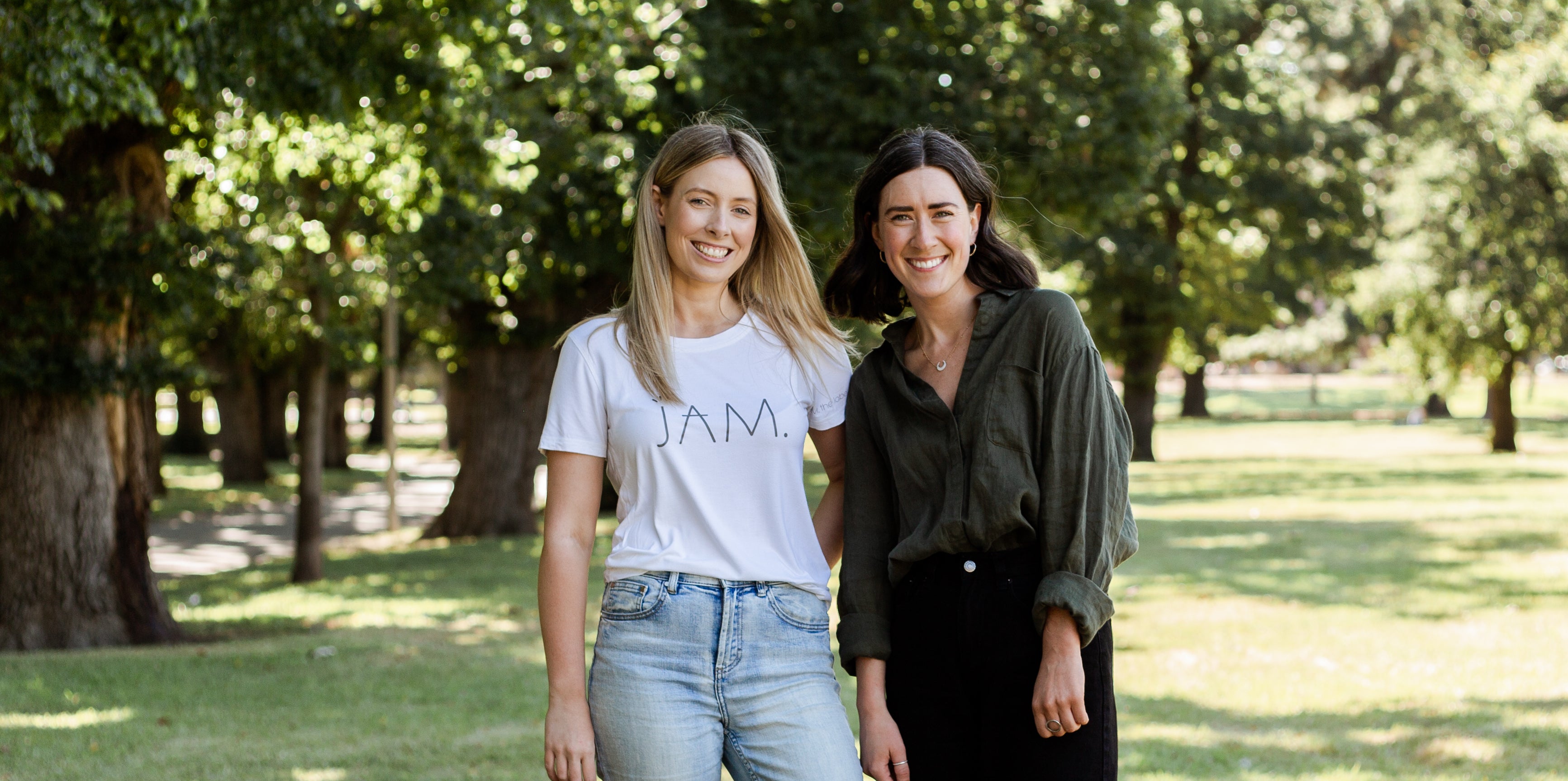As you may already know, JAM was founded by two Occupational Therapists and Disability Support Workers. We created JAM as we realised through our work with two of our clients, Jack and Maddie (Yep, that’s why we’re called JAM!), that dressing was such a daily difficulty. Jack and Maddie weren’t alone in this. We saw this with so many of our clients with Disability. When we first thought of the idea for JAM, we were still studying Occupational Therapy and at the time one of the key principles we were being taught was that if you can’t adapt the way someone does a task, you adapt the environment or the equipment. In this case the ‘equipment’ was the clothing, which led us to the idea of Adaptive Clothing.
As Occupational Therapists, we are experts in task analysis and problem solving. We can look at an activity such as dressing and identify the barriers to participation, then provide solutions to increase independence, ease and dignity for the person getting dressed. So when we were discussing the fact that Jack and Maddie and so many other clients with varying disabilities were all facing barriers to dressing, we couldn’t quite believe no one seemed to be discussing this or doing anything about it already.
From our experiences, most of the people that found dressing difficult, time-consuming or an undignified process, were used to this being the case and had accepted it for what it was. When we as Occupational Therapists would ask how an individual or their carer found dressing to be, it was common for the response to be along the lines of “Oh yeah, it’s fine” with no further exploration of exactly what that means. When we dug a bit deeper, we would often find that dressing might’ve taken that person up to an hour each day to complete, or that they were having to wear tracksuit pants or leggings every day as this was the only easy and comfortable clothing for them. So we would pose the question - Why should people with Disability or anyone with dressing needs be restricted to what is easy to wear, rather than what they would like to wear? Or why should someone accept that getting dressed is a time-consuming, difficult part of their daily life just because that’s the way it’s always been? It was these exact thoughts and conversations we were having that led to JAM. We thought, we don’t have to choose between function and fashion, so why should Jack and Maddie?
Aside from the fact this seems like a basic right everyone should be entitled to, as Occupational Therapists we thought about how clothing impacted the rest of someone’s day. As discussed in past blogs, the impact of fashion stretches far beyond the task of getting dressed in the morning. If the only clothing items accessible to someone are tracksuits or activewear, how are they going to feel about accessing the community, going to work, attending school or going on a date? As Occupational Therapists we look at anything that occupies your time and how we can increase participation or satisfaction with these tasks. So, if we know fundamentally that what you wear has a flow on effect across pretty much every occupation in your life, you’d think it would be pretty important to pay attention to!
We have worked with individuals before who were unable to confidently socialise because they had to wear pyjamas. Or parents who couldn’t access the community with their child because the risk of their child becoming dysregulated from their clothing and taking their clothes off in public was too high. If these people and so many others we worked with had access to Adaptive Clothing that was functional and comfortable but also fashionable, their participation in subsequent occupations would have been significantly improved.
So, next time you’re completing an initial assessment or getting to know a client for the first time, we implore you to give more weight to the importance of your client’s clothing and next time you ask how they go getting dressed, dig a little deeper.
As always, we love discussing Adaptive Fashion and assisting to tackle dressing needs. So please reach out if you have any questions or are wondering how a certain client may benefit from JAM products. If you are looking for particular items for your clients, we have multiple options to make this a little easier. You can search for items by dressing need in our clothing categories. We have categories such as Sensory Friendly, Seated Position, Energy Conservation and more. We also have a feature on each product page that explains our design features in greater detail, so please check those out too.


